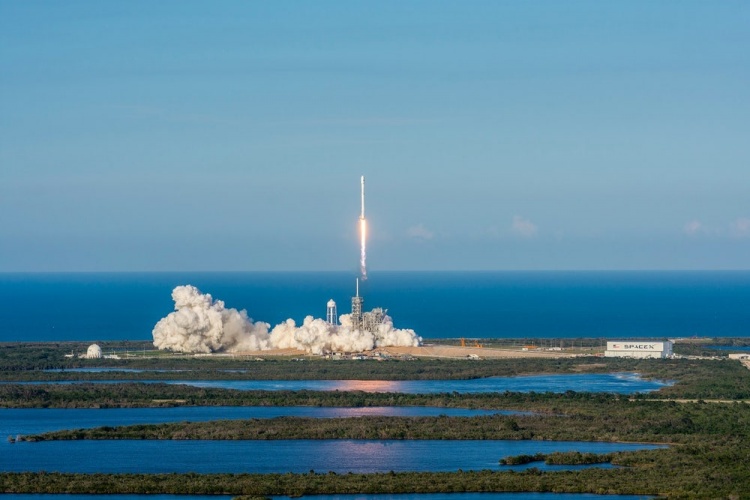
(Credit: SpaceX)
Having first been used on a resupply mission to the ISS in April last year, the Falcon 9 in question was refurbished over a four-month period. Less than a year later, the first stage was used to launch the SES-10 communications satellite – built by Airbus Defence and Space – from Cape Canaveral into geostationary orbit. The 5,300kg Ku-band satellite will provide broadcast coverage and internet connectivity over Latin America.
As well as successfully launching the payload, SpaceX was also able to recover the Falcon 9’s first stage for a second time. The booster landed on the drone ship Of Course I Still Love You, floating down range from the Kennedy Space Centre in the Atlantic Ocean.
According to Gwynne Shotwell, president and COO of SpaceX, while this first refurbishment took place over four months, the ultimate goal is to be able to reuse rockets on the same day. The company is currently working on a final iteration of the Falcon 9, which is due to fly its first mission later this year. Shotwell says this latest version is being designed to re-launch multiple times.
“The final vehicle design spin that we are doing on Falcon 9, that we will be flying later this year, that should be capable of up to 10 or even more (launches),” she said.
Speaking at a post-flight press conference, SpaceX founder Elon Musk expressed his joy at successfully reusing the Falcon 9 for the first time.
“It’s been 15 years to get to this point,” he said. “It’s taken us a long time, a lot of difficult steps along with way, but I am just incredibly proud of the SpaceX team for being able to achieve this incredible milestone in the history of space.”





IEA report claims batteries are ‘changing the game’
my comment was ironic, of course they should not be waiting around at all …